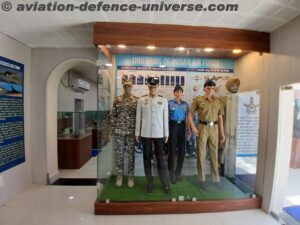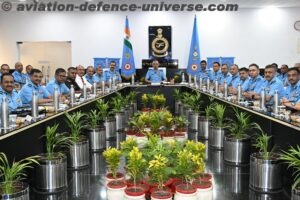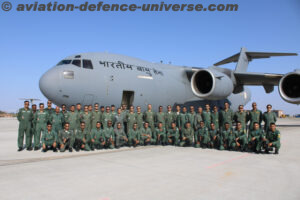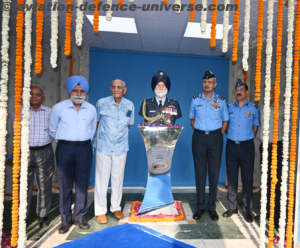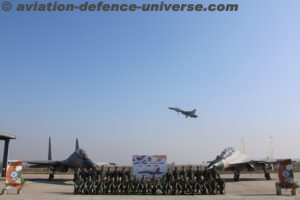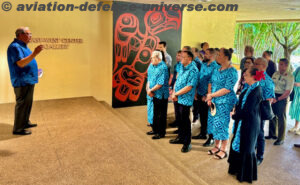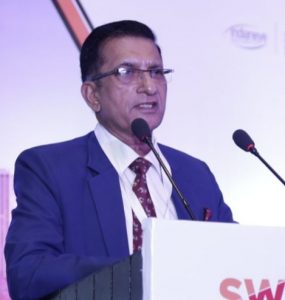Singapore. 04 JUNE 2016 . Thank you, John. Good morning, everyone.
I want to thank John for inviting me to speak again this year, and IISS for again bringing us together in this forum. For 15 years now – and I attended the first Dialogue in 2002 – IISS has been fostering the discussions and debates that have shaped the dynamic Asia-Pacific’s security, stability, and prosperity in this still young century. Thank you for doing so.
Thanks as well for the dinner last evening, which featured a thoughtful keynote by Thailand Prime Minister Prayut.
And I’d also like to thank our national host Singapore for welcoming us again this year. Prime Minister Lee, thank you. President Obama looks forward to hosting you in Washington in August. This nation – and its incredible rise – is the quintessential example of the remarkable progress in this region over the past 70 years.
Miracle after miracle has occurred here…Japan, then Taiwan, South Korea, Singapore and Southeast Asia rose and prospered, and now, China and India are rising and prospering.
And continued progress is being made daily – by young innovators in Hanoi, and at technology companies in Mumbai; by the transition in Burma, and by avid consumers in China; at the universities in Seoul, and in the bustling Strait of Malacca I flew over yesterday.
There are many who share the credit for this success. This region’s proud, industrious citizens. The statesmen in this region’s past, including the late Lee Kuan Yew, whom we continue to honor, and the many statesmen among us today. The policymakers, business leaders, military officials, scholars, and non-governmental leaders who’ve worked to make this region stable and prosperous. And, in addition to all these individuals, it is also to the credit of shared principles – principles that have long been accepted and collectively upheld.
All that progress has led to historic change in the Asia-Pacific. Most of the change has been positive: country after country is seeking to play a greater role in regional affairs, and that’s for the good. But not all the change in the region has been as constructive. Indeed, tensions in the South China Sea, North Korea’s continued nuclear and missile provocations, and the dangers of violent extremism felt worldwide, pose challenges to the region’s stability and prosperity.
And so as the region continues to change, forward-thinking statesmen and leaders must once again come together to ensure a positive, principled future…one where everyone, and every nation, continues to have the opportunity and freedom to rise, prosper, and win.
Thankfully, this room is full of such statesmen and leaders, and so is this region. And I want to talk with all of you about how we can come together: how we can continue to build a principled security network that will enable additional waves of miracles and human progress and ensure regional stability and prosperity for years to come.
You may recall that at the end of my remarks last year, I projected conversations we might have at future Shangri-La Dialogues.
If we continue to cooperate on security, I posited, we would one day be discussing a U.S.-China-India multilateral maritime exercise, a Japan-Republic of Korea joint disaster response in the South China Sea, and an ASEAN-wide security network.
Over the last year, we’ve made progress toward that vision. China and India will both participate once again in the U.S.-hosted RIMPAC naval exercise this summer. Japan and the Republic of Korea are engaging with each other in new ways. And, in addition to the ASEANcentric security network that’s developing in Southeast Asia, nations across the entire Asia- Pacific are increasingly working together – and networking security together.
By doing so, our nations are making a choice for a principled and inclusive future, one as bright and miraculous as our recent past. A future where every country – no matter how big or small – is free to make its own political, economic, and military choices, free from coercion and intimidation. Where disputes are resolved peacefully; and the freedoms of navigation and overflight, guaranteed by international law, are respected. And where, as a result, every person and nation has the opportunity to rise and prosper.
We all have an interest in realizing that future. And a responsibility to bring it about.
Now, unlike elsewhere in the world, peace and stability in the Asia-Pacific has never been maintained by a region-wide, formal structure comparable to NATO in Europe. That’s made sense for this region, with its unique history, geography, and politics, and where bilateral relationships have long served as the bedrock of regional security.
And yet, as the region continues to change, and becomes more interconnected politically and economically, the region’s militaries are also coming together in new ways. They are building connections for a common purpose: upholding the security and stability critical to a principled and prosperous future.
And these connections are now helping our countries plan together, exercise and train together, and operate together, more effectively and efficiently than ever before.
Now, this Asia-Pacific security network is more than some extension of existing alliances. It weaves everyone’s relationships together – bilateral, trilateral, and multilateral – to help all of us do more, over greater distances, with greater economy of effort. It enables us to take coordinated action to respond to contingencies like humanitarian crises and disasters; to meet common challenges, such as terrorism; and to ensure the security of and equal access to the global and regional commons, including vital waterways.
You can see this networked approach in our collective responses to Typhoon Haiyan in 2013 and the Nepal earthquake last year.
Most importantly, this is a principled security network. It is inclusive, since any nation and any military – no matter its capability, budget, or experience – can contribute. Everyone gets a voice, no one is excluded, and hopefully, no one excludes themselves. And as this security network reflects the principles our countries have collectively promoted and upheld for decades, it will help us realize the principled future that many in the region have chosen, and are working toward together.
By expanding the reach of all and by responsibly sharing the security burden, this principled network represents the next wave in Asia-Pacific security.
And the United States is fully committed to this principled security network and to the Asia-Pacific’s principled future. That’s because this region, which is home to nearly half the world’s population and nearly half the global economy, remains the most consequential for America’s own security and prosperity.
So even as the United States counters Russian aggression and coercion in Europe; as well as checks Iranian aggression and malign influence in the Middle East; and also accelerates ISIL’s defeat, America’s approach to the Asia-Pacific remains one of commitment, strength, and inclusion.
Last Friday, I spoke with the newest class of American Navy and Marine Corps officers as they graduated from the U.S. Naval Academy. These are some of the finest young men and women America has to offer. And I explained to them that the United States has long had enduring diplomatic, economic, and security interests in the Asia-Pacific.
As a result, the United States has for decades contributed to the region’s diplomatic, economic, and security affairs, including amid the many other times when some wrongly predicted an impending American withdrawal from the Asia-Pacific.
In fact, decade after decade – in the 1970s, in the 1980s, in the 1990s, and in the 2000s – we’ve heard that the United States would cede its role as the primary security provider in the Asia-Pacific. And instead, decade after decade – day in, and day out – American soldiers, sailors, airmen, and Marines have worked here, most often with your nations, to help ensure this region’s security and uphold a common set of principles for all our countries to follow…so that every nation and everyone in this region could rise and prosper.
That’s been America’s objective and practice for decades. Regardless of what else was going on at home or in other parts of the world – during Democratic and Republican administrations, in times of surplus and deficit, war and peace – the United States has remained economically, politically, and militarily engaged, as well as geographically located in the Asia- Pacific. And as I told those new officers, they will be doing the same in the years ahead and over the course of their long careers.
That’s because U.S. engagement in the Asia-Pacific is in America’s interest, not the policy of any one political party. And the Congressional representation here today – including Senators McCain, Barrasso, Cotton, Ernst, Gardner, Graham, and Sullivan – demonstrates that America’s commitment to the region – and the rebalance to the Asia-Pacific in particular – is not transient. It is enduring. And that’s because the logic of, the need for, and the value of American engagement in the Asia-Pacific is irrefutable. And is proven over decades.
President Obama launched the rebalance to ensure the United States continued to approach this changing region with commitment, strength, and inclusion. Indeed, the rebalance is an affirmative investment in – and a U.S. Government-wide commitment to – the Asia-Pacific’s principled future.
Through the rebalance, the United States has reenergized our diplomacy in the region.
Just look at recent months. The President hosted the first-ever U.S. ASEAN Summit at Sunnylands. President Obama made historic visits to Vietnam and Japan last week, his tenth trip to the region. I’m now on my fifth trip to the region – and it won’t be my last. And my colleague and friend John Brennan, our CIA Director, is also attending the Shangri-La Dialogue this weekend. Several of my Cabinet colleagues will attend next week’s U.S.-China Strategic and Economic Dialogue. Prime Minister Modi will be in Washington next week, and Prime Minister Lee, as I said, will visit the following month. And the President will return to Asia again in September. In other words, this is a busy month in a busy year but one that is representative of America’s increased attention and engagement in the region.
The United States is also strengthening economic ties with the region. For example, over the last seven years, U.S.-ASEAN trade has expanded by 55 percent. Since last year’s Shangri- La Dialogue, we’ve completed negotiations on the important Trans-Pacific Partnership trade deal, or TPP, which will bind the United States more closely together with 11 other economies, unlock economic opportunities for all of us, and guarantee a trade system of high standard.
And the Defence Department is operationalizing its part of the rebalance, too – cementing it for the future. That means the United States will remain, for decades, the primary provider of regional security and a leading contributor to the region’s principled security network.
To do so, the Defence Department is continuing to send its best people – including some of those new Naval officers and Marines I spoke with last week – and also its most advanced capabilities to the Asia-Pacific. That includes F-22 and F-35 stealth fighter jets, P-8 Poseidon maritime patrol aircraft, continuous deployments of B-2 and B-52 bombers, and our newest surface warfare ships.
The Defence Department is also investing in new capabilities critical to the rebalance.
We’re growing the number of surface ships and making each of them more capable, and we’re investing in Virginia-class submarines, new undersea drones, the new B-21 Long-Range Strike Bomber, as well as in areas like cyber, electronic warfare, and space.
The Defence Department maintains its world-leading capabilities because the United States has made incomparable investments over decades. As a result, it will take decades or more for anyone to build the kind of military capability the United States possesses. This strength is not simply about dollar figures. We harness those dollars to America’s innovative and technological culture to develop revolutionary technologies. And that military edge is strengthened and been honed by unrivaled and hard-earned operational experience over the past 15 years. No other military possesses this kind of skill and agility backed by this much experience.
The Defence Department is also developing innovative strategies and operational concepts. And the U.S. military is practicing these new ideas in training exercises, both on our own and with partners, none larger than this summer’s RIMPAC, which will bring together 27 countries for an opportunity to network.
As RIMPAC demonstrates, America’s defence relationships with allies and partners are the foundation of U.S. engagement in the Asia-Pacific, and those relationships are expanding and modernizing. While it would take me too long to go through every valuable partnership, you can see the breadth and depth of our bilateral efforts with some of the actions the United States and its allies and partners have taken since last year’s Shangri-La Dialogue.
For example, the U.S.-Japan alliance remains the cornerstone of Asia-Pacific security.
And with the new Defence Guidelines that Minister Nakatani and I signed last year, the U.S.-Japan alliance has never been stronger, or more capable of contributing to security around the region and beyond.
Similarly, the U.S.-Australia alliance is, more and more, a global one. As our two nations work together to uphold the freedom of navigation and overflight across the region, we’re also accelerating the defeat of ISIL together in Iraq and Syria.
America’s alliance with the Philippines is as close as it has been in decades. Through the new, landmark Enhanced Defence Cooperation Agreement, or EDCA, the United States is supporting the modernization of the Philippine Armed Forces. EDCA provides the opportunity for American and Filipino military personnel to regularly train, exercise, and operate together, including through new joint maritime patrols.
Another developing partnership, the U.S.-India military relationship, is as close as it has ever been. Through our strategic handshake – with the United States reaching west in its rebalance, and India reaching east in Prime Minister Modi’s Act East policy – our two nations are exercising together by air, land, and sea. And there’s also a technological handshake: we’re moving toward deeper and more diverse defence co-development and co-production, including on aircraft carrier design and construction. Minister Parrikar and I will identify new ways to cooperate in advance of Prime Minister Modi’s visit to Washington next week.
Meanwhile, President Obama’s historic visit to Hanoi last week was the latest demonstration of the dramatically-strengthened U.S.-Vietnam partnership. Thanks in part to the leadership of Senator McCain, the United States has lifted the ban on lethal weapons sales to Vietnam. Now Vietnam will have greater access to the military equipment it needs.
Finally, the U.S.-Singapore relationship continues to grow. Just yesterday, I flew over the Strait of Malacca with my counterpart Minister Ng in one of the American P-8 surveillance aircraft that is now part of a rotation here. That rotation is one of the many examples, including Singapore’s hosting four American littoral combat ships, of how our two countries are working together to build cooperation, provide security, and respond to crises around Southeast Asia.
And it’s reflective of a growing trend. Indeed, even as the United States will remain the most powerful military and main underwriter of security in the region for decades to come – and there should be no doubt about that – those growing bilateral relationships demonstrate that nations around the region are also committed to doing more to promote continued regional security and prosperity. That’s why the Asia-Pacific’s principled security network is growing.
And as the region changes and the rebalance is solidified, the United States is and will continue using its unique capabilities, experience, and influence to enhance the region’s security network – always contributing with commitment, strength, and inclusion.
For example, we’re moving out on the Maritime Security Initiative I announced at last year’s Dialogue. This initiative represents a $425-million-dollar, five-year, American commitment to multilateral security cooperation that aims to establish a maritime security network in Southeast Asia.
In the Initiative’s first year, the United States is helping the Philippines enhance its National Coast Watch Center and improve reconnaissance and maritime sensors; helping Vietnam train to develop future unmanned maritime capabilities; providing Indonesia and Malaysia with communications equipment and training; and working with Thailand on processing information at fusion centers.
More than simply providing money or hardware, the United States is helping these five countries connect with each other and develop a networked approach to regional challenges.
Those capabilities, those connections, and that U.S. partnership will allow these countries to see more, share more, and do more to ensure maritime security throughout Southeast Asia.
This initiative demonstrates the promise of a principled security network – nations building connections for a common cause, planning and training together, and eventually operating in a coordinated way. Throughout the Asia-Pacific, more and more nations are
similarly coming together in three key ways.
First, some pioneering trilateral mechanisms are bringing together like-minded allies and partners to maximize individual contributions and connect nations that previously worked together only bilaterally.
For instance, the U.S.-Japan-Republic of Korea trilateral partnership helps us coordinate responses to North Korean provocations. And I’m pleased to announce that the United States, Japan, and the Republic of Korea will conduct a trilateral ballistic missile warning exercise later this month.
And two other trilateral relationships – U.S.-Japan-Australia and U.S.-Japan-India – are also growing thanks, in part to exercises. We’ve agreed to hold, and begun planning on, additional U.S.-Japan-Australia trilateral exercises. And through joint activities like this year’s MALABAR Exercise, the U.S.-Japan-India trilateral relationship is starting to provide real, practical security cooperation that spans the entire region from the Indian Ocean to the Western Pacific.
We’re also seeing trilateral cooperation around other initiatives. For example, the United States and Thailand included Laos in a successful bilateral program, and now our three nations are training together on explosive ordnance disposal.
Second – and moving beyond trilateral relationships involving the United States – many countries within the Asia-Pacific are coming together on their own: strengthening and developing bilateral relationships, and also creating trilateral arrangements.
Japan and Vietnam are collaborating on new joint maritime exercises. Japan is also working to build the capacity of the Philippine maritime forces. And India is increasing its training with Vietnam’s military and coast guard on their common platforms.
The Japan-Australia-India trilateral meeting last June was a welcome development and addition to the region’s security network. And Indonesia has proposed trilateral joint maritime patrols with Malaysia and the Philippines, including counter-piracy patrols in the Sulu Sea.
The United States welcomes and encourages these burgeoning partnerships among like-minded partners who share our vision of a principled regional order.
Third and even more broadly, all of our nations are creating a networked, multilateral regional security architecture – from one end of the region to another – through the ASEAN Defence Ministers Meeting-Plus. At Sunnylands in February, ASEAN demonstrated again why it is a model for the principled future we all want for the entire Asia-Pacific. In the summit declaration, the region committed to maintaining peace, security, and stability and to upholding shared principles in the region, including the freedom of navigation and overflight.
ADMM-Plus fills the growing need for an action-oriented, ASEAN-centric regional institution that builds trust, facilitates practical multilateral security cooperation, and brings the region together to meet those commitments. I want to thank Laos for its leadership of ADMMPlus this year.
And I’m pleased to announce that in September, the United States and Laos will co-host an informal defence ministers’ dialogue in Hawaii, with all of the ASEAN countries to follow-up on the Sunnylands commitments, discuss common interests, and find new ways to network regional security.
As we weave these bilateral, trilateral, and multilateral relationships together, it’s important to remember that this principled network is not aimed at any particular country: it is open and excludes no one. This means that as nations want to contribute to regional stability and security, they can work together with other nations in the network to do so.
The United States welcomes the emergence of a peaceful, stable, and prosperous China that plays a responsible role in the region’s principled security network. We know China’s inclusion makes for a stronger network and a more stable, secure, and prosperous region.
In all of our interactions with our Chinese counterparts, the United States consistently encourages China to take actions that uphold – and do not undercut – the shared principles that have served so many in Asia-Pacific so well.
The region will be stronger, safer, and more prosperous when all countries are working toward a common vision in which shared principles are upheld, all countries enjoy equal treatment irrespective of their size or strength, and disputes are resolved peacefully and lawfully.
Unfortunately, there is growing anxiety in this region, and in this room, about China’s activities on the seas, in cyberspace, and in the region’s airspace. Indeed, in the South China Sea, China has taken some expansive and unprecedented actions, that have generated concerns about China’s strategic intentions.
And countries across the region have been taking action and voicing concerns publicly and privately, at the highest levels, in regional meetings, and global fora. As a result, China’s actions in the South China Sea are isolating it, at a time when the entire region is coming together and networking. Unfortunately, if these actions continue, China could end up erecting a Great Wall of self-isolation.
Now, the United States is not a claimant in the current disputes in the South China Sea.
And we do not take a position on which claimant has the superior sovereignty claim over the disputed land features.
But, the United States will stand with regional partners to uphold core principles, like freedom of navigation and overflight, and the peaceful resolution of disputes through legal
means and in accordance with international law.
As I affirmed here last year and America’s Freedom of Navigation Operations in the South China Sea have demonstrated, the United States will continue to fly, sail, and operate wherever international law allows, so that everyone in this region can do the same.
And the United States will work with all Asia-Pacific nations to ensure these core principles apply just as equally in the vital South China Sea as they do everywhere else. Because only when everyone plays by the same rules can we avoid the mistakes of the past, like when countries challenged one another in contests of strength and will, with disastrous consequences for the region.
The United States views the upcoming ruling by the UN Arbitral Tribunal on the South China Sea as an opportunity for China and the rest of the region to recommit to a principled future, to renewed diplomacy, and to lowering tensions, rather than raising them. All of us should come together to ensure this opportunity is realized.
The United States remains committed to working with China to ensure a principled future. Our two countries have a long-standing military-to-military relationship. We recently completed two confidence-building measures, one on maritime rules of behavior and another on crisis communications. The regular U.S.-China Military Maritime Consultative Agreement talks were just held in Hawaii. And China will also be back at RIMPAC this year.
In fact, the United States and China plan to sail together from Guam to Hawaii for RIMPAC, conducting several exercise events along the way, including an event to practice search-and-rescue.
And the United States wants to strengthen those ties. I plan, at President Xi’s invitation, to discuss this deeper cooperation as well as the concerns I’ve outlined here, when I travel to Beijing later this year. America wants to expand military-to-military agreements with China to focus not only on risk reduction, but also on practical cooperation. Our two militaries can also work together, bilaterally or as part of the principled security network, to meet a number of challenges – like terrorism and piracy – in the Asia-Pacific and around the world.
After all, both our nations share so many interests. And we face many of the same global challenges. The United States expects and welcomes a China that plays a responsible role in world affairs commensurate with its wealth and potential influence. Together in a network represented by all the delegates in this room, we can do so much. And the United States wants to work with China to find solutions for the global problems we’re both facing and seize the many opportunities before us.
By networking security together, the United States, China, and all others in the region can
continue to ensure stability and prosperity in a dynamic region. We can become more interconnected; we can develop greater interoperability; we can innovate together on shared capabilities. And we can continue to ensure that this region’s historic change becomes historic progress…giving everyone and every nation in the Asia-Pacific the opportunity to rise and prosper.
Through a principled security network, we can all meet the challenges we’re facing together – whether it’s Russia’s worrying actions, North Korea’s nuclear and missile provocations, the threat posed by extremist groups, or the growing strategic impact of climate
change.
These challenges are real for all of us who live in the Asia-Pacific. But so are the opportunities: for nations, for militaries, and for the people of the Asia-Pacific. Across the region, there are economic miracles still to occur, military relationships still to strengthen, and populations still to educate, empower, and enrich.
To realize these opportunities, the Asia-Pacific will need continued stability and security.
It is said of this region, that security is like oxygen. When you have enough of it, you pay no attention to it. But when you don’t have enough, you can think of nothing else.
For many years, the United States – along with its allies and partners – helped provide the oxygen in this region. But by networking regional security together, we can all contribute more, and in different ways. In the years ahead, as we continue to realize this brighter, principled future, providing the region’s oxygen will more and more become a networked effort.
Through the region’s principled security network, all of us will provide that oxygen – Americans and Filipinos, Chinese and Indians, Singaporeans and Japanese, Australians and Malaysians, Koreans, and Kiwis, and many, many more. Together, we will provide the security that enables millions upon millions of people all around the Asia-Pacific to continue to rise and prosper, to be safe, to raise their children, to dream their dreams, to live lives that are full.
At a time of great change in this region, and in many of our home countries, all of us must defend the security, stability, and principles that have meant so much to so many in the Asia-Pacific. To do so, we may change how we network, how we plan, and how we operate.
But we can never change why we’re networking, and what we’re networking for: for our security and shared interests…for the principles that have benefited so many for so long…and for that principled future where everyone can continue to rise and prosper.
That is the future many of us in this room spend our days working toward. I thank you for that dedication. But we’re not finished yet. We have work still to do. And I look forward to collaborating, and networking, with each of you – in the days, weeks, months, and years ahead – to realize this region’s principled future.
Thank you.






































